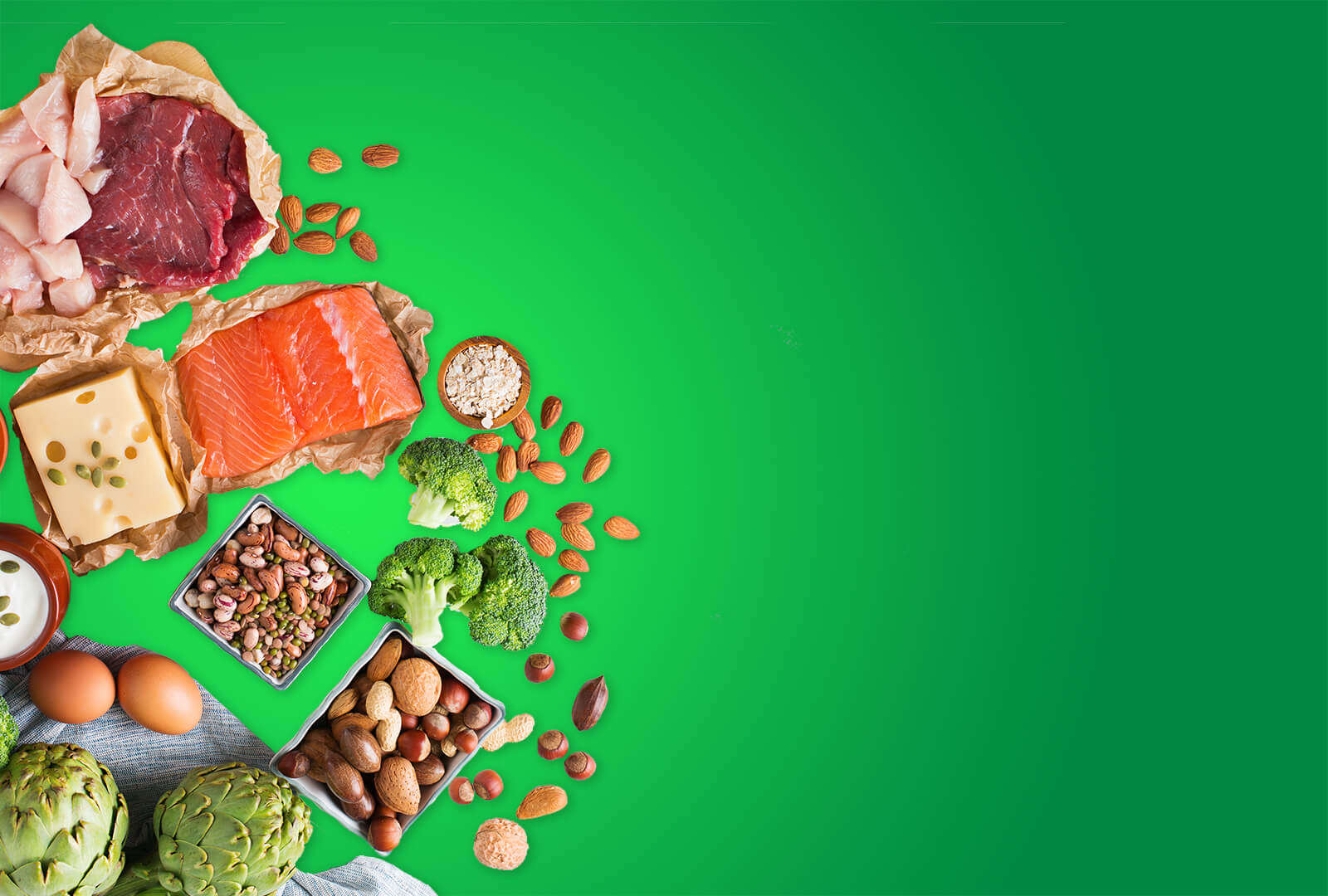The recommended dietary allowance (RDA) from the National Academy of Medicine even recommends that we eat roughly 0.36 grams (0.013 ounces) per pound of body weight (or 0.8 grams per kilogram) each day. Yet not all proteins are created equal. Protein is made up of amino acids, and the plants and meat we eat contain 20 varieties. Human bodies can synthesize almost half of these, but nine of the essential amino acids we simply can’t make: they have to come from the food we eat. And not all protein sources provide all of the essential amino acids by themselves. Grains, legumes and nuts, while rich in protein, don’t contain all 20 amino acids. Fortunately, it’s relatively easy to get all the essential amino acids from what are known as “complete proteins” such as meat, dairy, eggs, poultry, soy and fish.
As we deepen our understanding of how our food works for us, we see how many functions of the body protein serves, and some research points toward the benefits of eating even more of it. Food companies are responding enthusiastically by lining grocery store shelves with a bounty of new, exciting and vital protein-packed foods such as protein-boosted pasta, protein snack packs and Greek yogurt.
Slow and Steady
In an ideal world, we would make all of our food choices based on a comprehensive view of nutrition, but in reality, many of us are mainly concerned with weight loss. Fortunately, scientists and astute eaters alike have noticed that a protein-packed diet is more satisfying than salad greens. They’ve observed how satisfied people feel after a steak dinner, and how long that feeling lasts. That’s good for people trying not to eat every time they get a little hungry — when you’re satisfied, you don’t eat as many snacks or crave the next meal so soon.
Simple carbs can be quickly broken down into fuel for the body to use or store, so a person will soon be hungry and ready for more. Protein, however, requires more time and energy to convert into something the body can use. Because of the way that protein is digested more slowly, it will give a feeling of fullness for a longer period of time. That’s key for those of us who want to avoid being hungry and grumpy all-at-once.
Several studies confirm that healthy people on a high-protein diet feel fuller and less hungry than healthy people who eat a lower-protein diet. In 2016, noted Purdue University nutrition researcher Richard Mattes conducted a larger study that was featured in the Journal of the Academy of Nutrition and Dietetics.
High protein intake is the focus of several diet plans, including Atkins (low carbohydrate and sugar intake), and South Beach (low in carbs, higher in protein and healthy fats) to paleo (lean protein, fruits and vegetables with no processed foods) and ketogenic (originally adapted from a low-carb, high-fat diet used to reduce seizures in epileptic children). When people feel especially satisfied after meals, they are more likely to stick with a particular way of eating.
Metabolism Boost
Protein also seems to boost metabolism since it takes more energy to digest than simple carbs do, making the body work harder. Studies show a significant increase in metabolic rate during protein digestion and for some time afterward. It’s a stretch to call eating a burger a workout, but the mechanism of burning more calories by digesting more protein may well lead to leaner body mass.
Healthy proteins have always been considered a part of a well-balanced diet. However, there is also ample evidence that suggests a link between higher protein intake for weight loss and other health benefits, including a seminal 2005 study published in The American Journal of Clinical Nutrition.
Though it was long assumed that extra protein was necessary only for athletes, laborers or growing kids who needed to build muscle, it turns out other demographics benefit from increased dietary protein as well, including older folks who lose muscle through the aging process. Correlations are being found between elevated protein intake and increased muscle mass, stronger mental concentration and better sleep — all areas of concern for the elderly. Reduced fracture risk is another encouraging finding. Having more bone mass greatly lowers the risk of fractures and osteoporosis in elderly men and women, according to the widely cited Framingham osteoporosis study, published in the Journal of Bone and Mineral Research. Similarly, a Utah State Department of Nutrition and Food Sciences study points to the way dietary protein, particularly from animal sources, possibly lowers the chance of hip fractures for women who are postmenopausal.
The Centers for Disease Control and Prevention (CDC) has identified adult-onset diabetes (Type 2) as a looming population health epidemic. A recent set of projections from the National Institutes of Health shows the percentage of the U.S. population with diabetes increasing from 11 percent to more than 15 percent (with some states as high as 20.5 percent) by the year 2030 if current trends continue.
Enter protein: Several recent studies have shown a correlation between high-protein diets and reduced risk for Type 2 diabetes and have established that a high-protein diet can significantly improve glucose tolerance as well as blood pressure and cholesterol levels. Based on these discoveries, protein plays an essential role in the programs offered by a crop of new health-tech startups like San Francisco-based Virta Health, which has the ambitious goal of reversing diabetes in 100 million people by the year 2025.
In the end, protein’s most important role will be delivering on its potential to improve health on a national and global scale.
